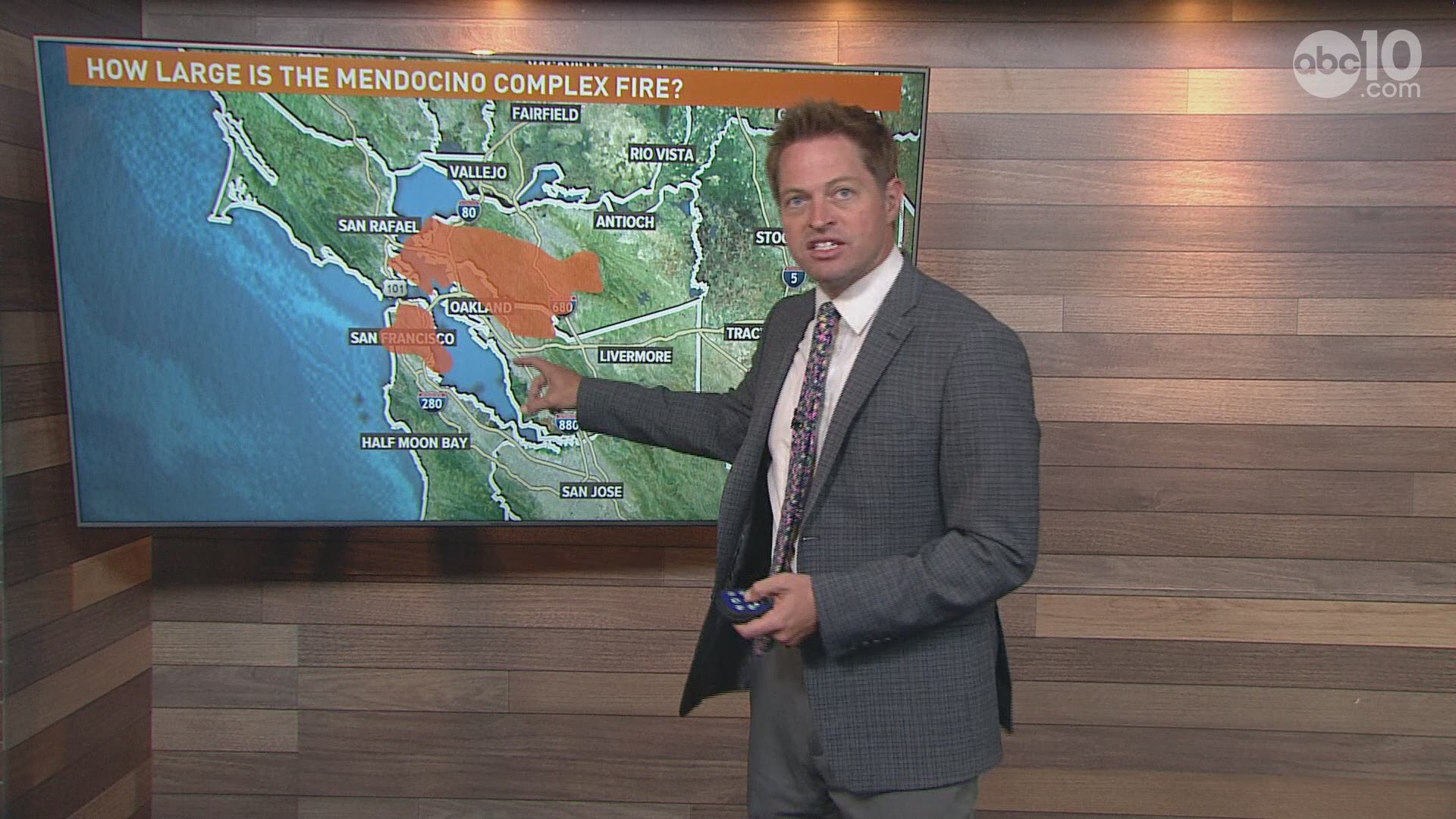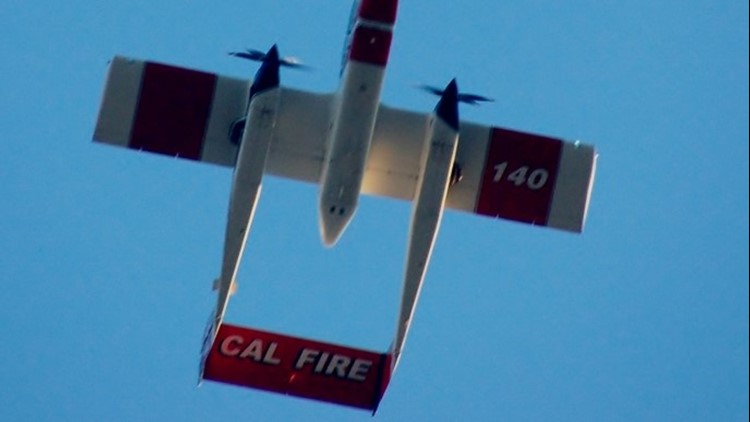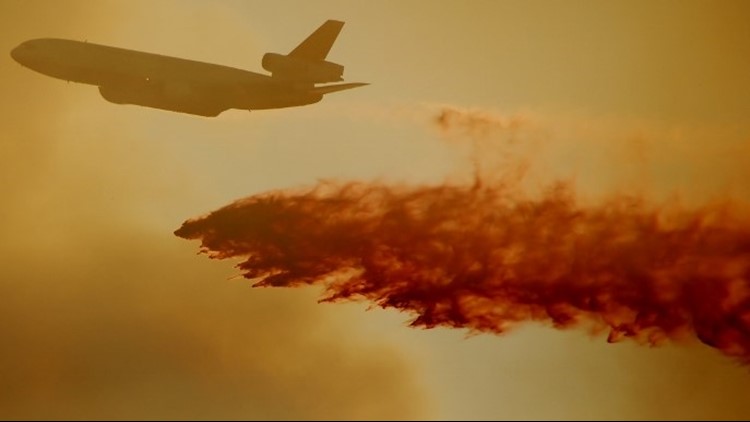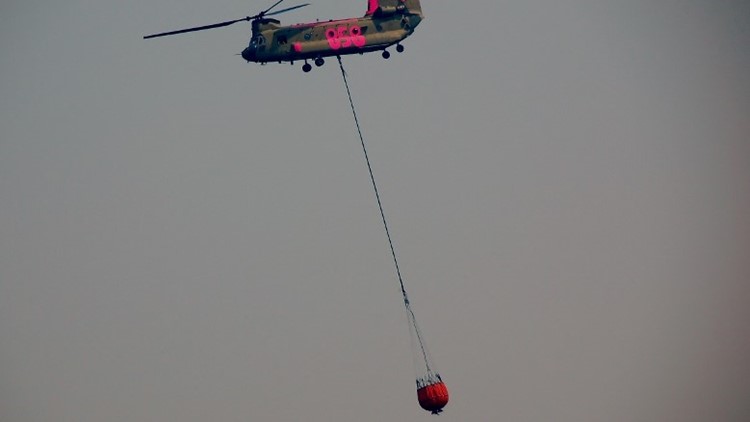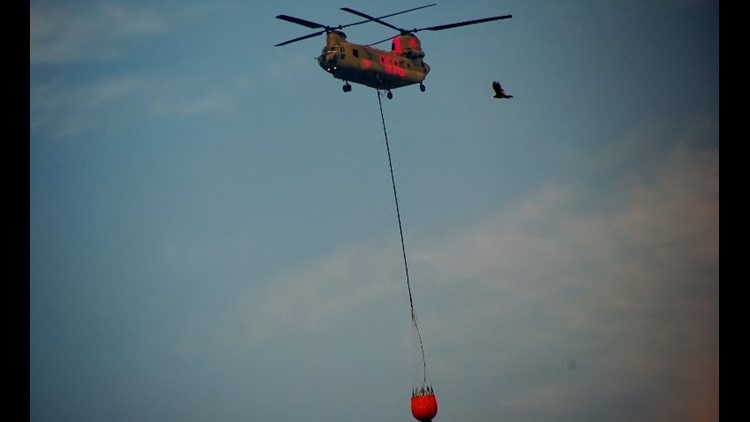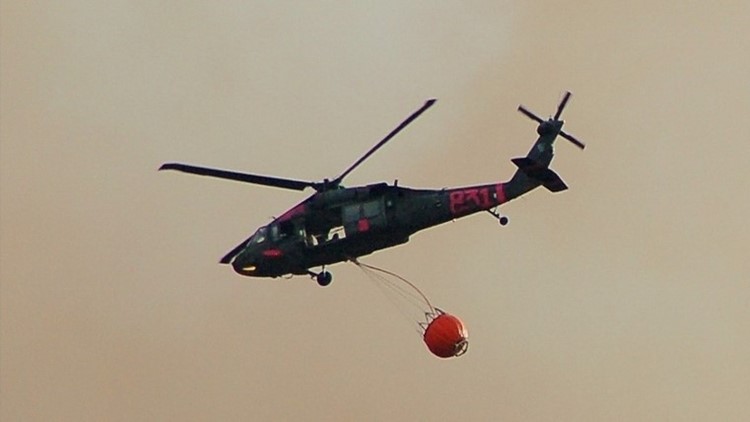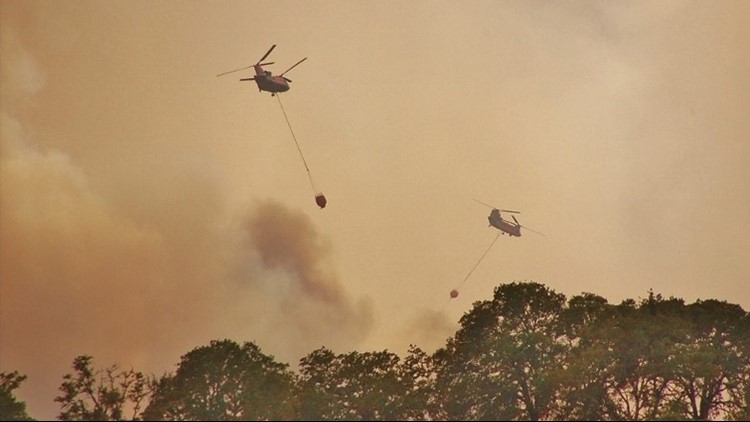2:45 p.m. Update:
Firefighters struggled against rugged terrain, high winds and an August heat wave Tuesday to slow the spread of the biggest wildfire ever recorded in California, an inferno that exploded to more than 450 square miles in just 11 days.
The blaze, centered near the community of Upper Lake, about 100 miles north of San Francisco, spread fast because of what officials said was a perfect combination of weather, topography and abundant vegetation turned into highly flammable fuel by years of drought.
The flames were raging in mostly remote areas, and no deaths or serious injuries were reported. But at least 75 homes have been lost, and thousands of people have been forced to flee. The blaze, dubbed the Mendocino Complex, was reported 20 percent contained.
Its rapid growth to an area the size of Los Angeles at the same time firefighters were battling more than a dozen other major blazes around the state fanned fears that 2018 could become the worst wildfire season in California history.
"For whatever reason, fires are burning much more intensely, much more quickly than they were before," said Mark A. Hartwig, president of the California Fire Chiefs Association.
About 3,900 firefighters, including a crew of 40 volunteers from New Zealand, were battling the blaze, contending with temperatures in the high 90s and winds gusting to 25 mph.
The area has few roads that can serve as firebreaks, and firefighters instead fell back to natural barriers like streams or used bulldozers to cut fire lines.
But the flames were moving so fast in spots that they blew past fire lines, forcing firefighters to retreat, said Battalion Chief Jonathan Cox of the state Department of Forestry and Fire Protection, or Cal Fire.
"There's no way you're going to stop that fire," said Kyle Coleman, 28, who returned to his childhood home last week to help his father try — in vain, it turned out — to protect it. "A big wall of flames came over the mountain. ... I pretty much got my dad out of there."
In all, 14,000 firefighters were battling blazes across California, which is seeing earlier, longer and more destructive wildfire seasons because of drought, warmer weather attributed to climate change, and the building of homes deeper into the forests.
"Cal Fire is really an urban firefighter service in the woods," said Arizona State University professor Stephen Pyne, a wildfire management expert.
The Mendocino Complex is actually two blazes burning so close together that authorities are attacking them as one, a common practice at Cal Fire. The fires started July 27 within an hour of each other and about 15 miles apart. As of Tuesday, they were separated by just a few miles. Officials have not determined the cause of either one.
In becoming the biggest fire in California history, the Mendocino Complex fire broke a record set just eight months ago. A blaze in Southern California in December killed two people, burned 440 square miles and destroyed more than 1,000 buildings.
Crews also gained ground this week against another Northern California wildfire, one that destroyed more than 1,000 homes in and around the city of Redding and was blamed for at least six deaths.
Meanwhile, a blaze burning near Yosemite National Park has been raging for nearly a month but is still just one-third as large as the biggest fire, though dense smoke has closed much of the park to visitors for the past two weeks.
California's firefighting costs have more than tripled from $242 million in the 2013 fiscal year to $773 million in the 2018 fiscal year that ended June 30, according to Cal Fire.
"We're in uncharted territory," Gov. Jerry Brown warned last week. "Since civilization emerged 10,000 years ago, we haven't had this kind of heat condition, and it's going to continue getting worse. That's the way it is."
12:15 p.m. Update:
A new mandatory evacuation order has been issued due to the Mendocino Complex Fire.
In Mendocino County, South of Eel River, West of the Mendocino-Lake county line, east of 10500 block of Mid Mountain Road, and north of Pine Avenue are under evacuation, according to Cal Fire.
Original story
The two wildfires that make up the Mendocino Complex Fire have grown to become the largest wildfire in California history.
At 283,800 acres burned, the Mendocino Complex Fire now sits at number one of California's largest wildfires. The Thomas Fire from 2017, which burned 281,893 acres, now sits at number two on the list.
The latest update from Cal Fire notes that total containment stayed at 30 percent from Monday to Tuesday. The number of structures threatened by the fire has increased, however, from over 9,300 Monday to 11,300 Tuesday morning. Seventy five residences have been destroyed, while an additional 12 have been damaged.
Of the two fires that makeup the Mendocino Complex Fire, the River Fire, which has burned over 48,800 acres, has the largest containment, sitting at 58 percent contained. The Ranch Fire, which has burned over 235,000 acres, sit at only 21 percent contained. Fire officials believe they'll reach full containment by Aug. 15, 2018.
According to Cal Fire, the Ranch Fire continues to spread to the east and southeast direction.
PHOTOS: Airplanes soar over Lake County area to help battle Mendocino Complex Fire
"Today more engines, water tenders, and dozers came in to help fire suppression efforts," Cal Fire's incident report says. "Tonight, fire crews will try to take advantage of the lower tempertures to increase suppression and hold current containment lines."
Mandatory evacuations are still in place for Lake, Mendocino, and Colusa Counties.

